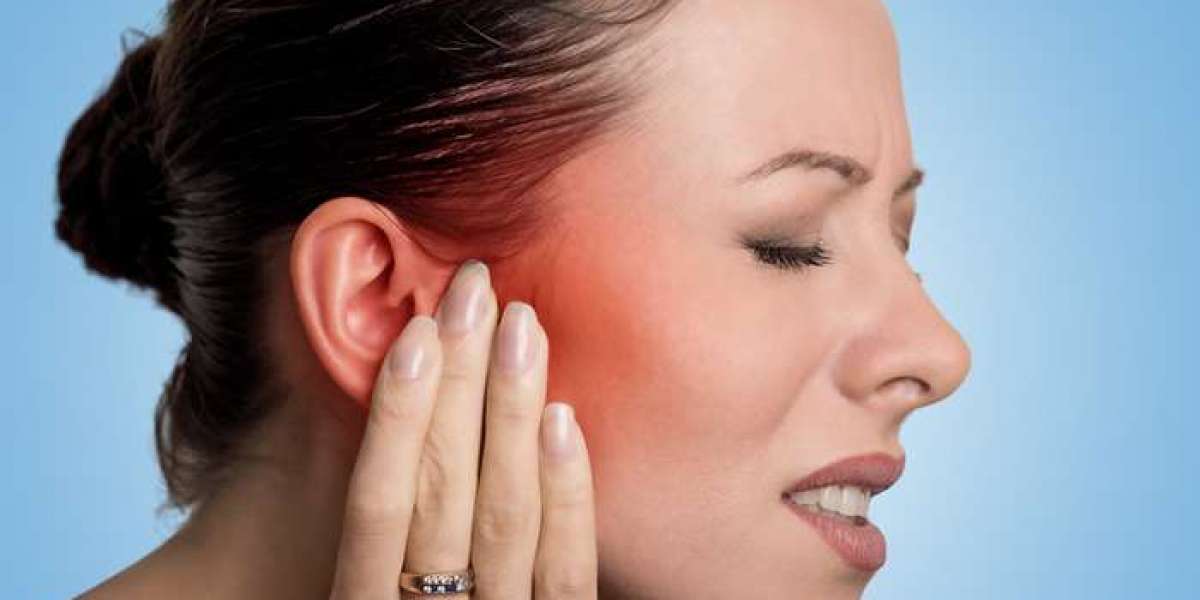The eardrum, or tympanic membrane, is a delicate yet vital part of your ear that helps with hearing by transmitting sound vibrations. When the eardrum is damaged, typically due to infection, trauma, or sudden pressure changes, it can lead to pain, hearing loss, and increased risk of infection. While some cases of eardrum damage require surgery, there are several non-surgical ways to encourage healing. In this blog, we’ll explore natural methods for repairing an eardrum and provide practical tips on how to promote recovery without surgery.
Causes of Eardrum Damage:
Eardrum perforations or tears are commonly caused by:
- Ear infections (Otitis Media): Middle ear infections are a frequent cause of eardrum rupture. The buildup of fluid and pressure can lead to a tear.
- Trauma: Injury from a blow to the ear, insertion of foreign objects, or accidents can damage the eardrum.
- Sudden pressure changes (Barotrauma): Air travel or deep-water diving can lead to rapid pressure changes that may rupture the eardrum.
- Loud noises: Exposure to loud music or sounds can cause physical damage to the eardrum.
Can an Eardrum Heal Without Surgery?
The good news is that many minor perforations and eardrum injuries can heal on their own without requiring surgical intervention. However, healing depends on the extent of the damage. Small tears or holes in the eardrum often close naturally within a few weeks to months. The key is to keep the ear protected and avoid activities that could hinder the healing process.
Tips for Repairing an Eardrum Without Surgery:
1. Keep the Ear Dry:
One of the most important steps in promoting healing is to keep the ear dry. Moisture can introduce bacteria and cause infection, preventing the eardrum from healing properly. Here are a few ways to protect the ear:
- Avoid swimming or submerging your ear in water during the healing process.
- Use earplugs or a cotton ball coated with petroleum jelly when showering to prevent water from entering the ear canal.
- When cleaning the ear, avoid inserting cotton swabs or any objects that could further damage the eardrum.
2. Use Antibiotic or Antifungal Treatments:
If the eardrum damage is due to an infection, your doctor may prescribe antibiotic ear drops or oral antibiotics to help clear up any infection and prevent further complications. If a fungal infection is suspected, antifungal drops may be prescribed. These treatments can help promote healing and reduce inflammation.
3. Pain Management with Over-the-Counter Medications:
An injured eardrum can cause significant discomfort. Over-the-counter pain relievers like acetaminophen (Tylenol) or ibuprofen (Advil, Motrin) can help reduce pain and inflammation. Be sure to follow the recommended dosage guidelines. If the pain persists or worsens, it’s essential to consult a doctor for further advice.
4. Avoid Loud Noises:
Loud sounds, such as music, machinery, or construction noise, can exacerbate ear injury and prevent healing. To protect your ears during recovery, it’s essential to:
- Avoid loud environments or wear noise-canceling headphones if you cannot avoid them.
- Limit the use of headphones or earphones, as they can put pressure on the ear and delay healing.
5. Follow a Healthy Diet for Healing:
A healthy, balanced diet rich in vitamins and minerals is essential for the healing process. Vitamin C and zinc are particularly helpful for tissue repair and immune support. Foods like citrus fruits, leafy greens, nuts, seeds, and lean proteins can aid in faster recovery.
6. Eardrum Patching:
For some people with larger eardrum perforations, a procedure called eardrum patching may be an option. In this non-surgical method, a doctor applies a special patch to the eardrum to encourage the tissue to grow back and close the perforation. This process is usually done in a doctor’s office and can be an effective way to repair the eardrum without surgery.
7. Monitor for Infection:
An untreated infection in the middle ear or the ear canal can cause the eardrum to heal improperly. Watch for signs of infection, such as:
- Increased pain or swelling
- Drainage of yellow or green fluid from the ear
- A fever
If you experience any of these symptoms, seek medical attention promptly to avoid complications and ensure the proper healing of your eardrum.
8. Stay Calm and Avoid Stress:
Stress can affect the body’s immune system and delay recovery. Take measures to reduce stress during the healing process, such as getting plenty of rest and practicing relaxation techniques.
When to Seek Medical Help:
While most eardrum perforations heal on their own, it’s important to consult a healthcare provider if:
- You experience severe pain or discomfort that doesn't improve with over-the-counter pain relievers.
- You notice discharge from the ear, especially if it’s yellow, green, or bloody.
- Your hearing doesn’t improve after a few days or weeks.
- You experience persistent ringing in the ear (tinnitus) or a sense of fullness.
- The perforation is large and does not close on its own.
In such cases, your doctor may recommend further treatment or surgery to repair the eardrum if necessary.
Conclusion:
Repairing an eardrum without surgery is possible in many cases, particularly for small perforations or tears. By keeping the ear dry, avoiding loud noises, using medications as prescribed, and supporting the healing process with a healthy lifestyle, you can significantly improve the chances of natural recovery. If you experience persistent symptoms or complications, don’t hesitate to seek medical advice. With the right care, many people can restore their eardrum and hearing without the need for surgery.








